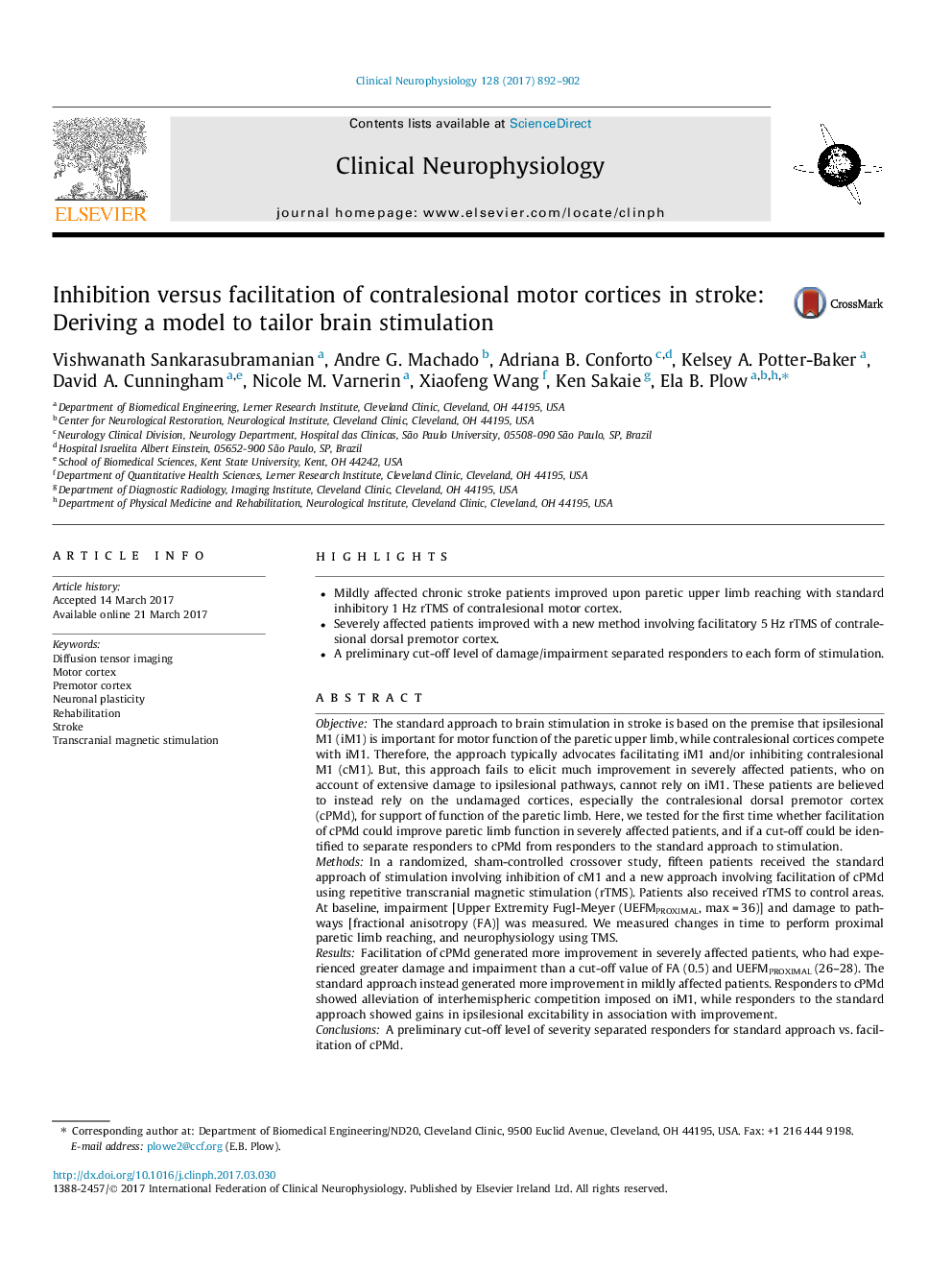| کد مقاله | کد نشریه | سال انتشار | مقاله انگلیسی | نسخه تمام متن |
|---|---|---|---|---|
| 5627921 | 1406358 | 2017 | 11 صفحه PDF | دانلود رایگان |
- Mildly affected chronic stroke patients improved upon paretic upper limb reaching with standard inhibitory 1Â Hz rTMS of contralesional motor cortex.
- Severely affected patients improved with a new method involving facilitatory 5Â Hz rTMS of contralesional dorsal premotor cortex.
- A preliminary cut-off level of damage/impairment separated responders to each form of stimulation.
ObjectiveThe standard approach to brain stimulation in stroke is based on the premise that ipsilesional M1 (iM1) is important for motor function of the paretic upper limb, while contralesional cortices compete with iM1. Therefore, the approach typically advocates facilitating iM1 and/or inhibiting contralesional M1 (cM1). But, this approach fails to elicit much improvement in severely affected patients, who on account of extensive damage to ipsilesional pathways, cannot rely on iM1. These patients are believed to instead rely on the undamaged cortices, especially the contralesional dorsal premotor cortex (cPMd), for support of function of the paretic limb. Here, we tested for the first time whether facilitation of cPMd could improve paretic limb function in severely affected patients, and if a cut-off could be identified to separate responders to cPMd from responders to the standard approach to stimulation.MethodsIn a randomized, sham-controlled crossover study, fifteen patients received the standard approach of stimulation involving inhibition of cM1 and a new approach involving facilitation of cPMd using repetitive transcranial magnetic stimulation (rTMS). Patients also received rTMS to control areas. At baseline, impairment [Upper Extremity Fugl-Meyer (UEFMPROXIMAL, max = 36)] and damage to pathways [fractional anisotropy (FA)] was measured. We measured changes in time to perform proximal paretic limb reaching, and neurophysiology using TMS.ResultsFacilitation of cPMd generated more improvement in severely affected patients, who had experienced greater damage and impairment than a cut-off value of FA (0.5) and UEFMPROXIMAL (26-28). The standard approach instead generated more improvement in mildly affected patients. Responders to cPMd showed alleviation of interhemispheric competition imposed on iM1, while responders to the standard approach showed gains in ipsilesional excitability in association with improvement.ConclusionsA preliminary cut-off level of severity separated responders for standard approach vs. facilitation of cPMd.SignificanceCut-offs identified here could help select candidates for tailored stimulation in future studies so patients in all ranges of severity could potentially achieve maximum benefit in function of the paretic upper limb.
Journal: Clinical Neurophysiology - Volume 128, Issue 6, June 2017, Pages 892-902
